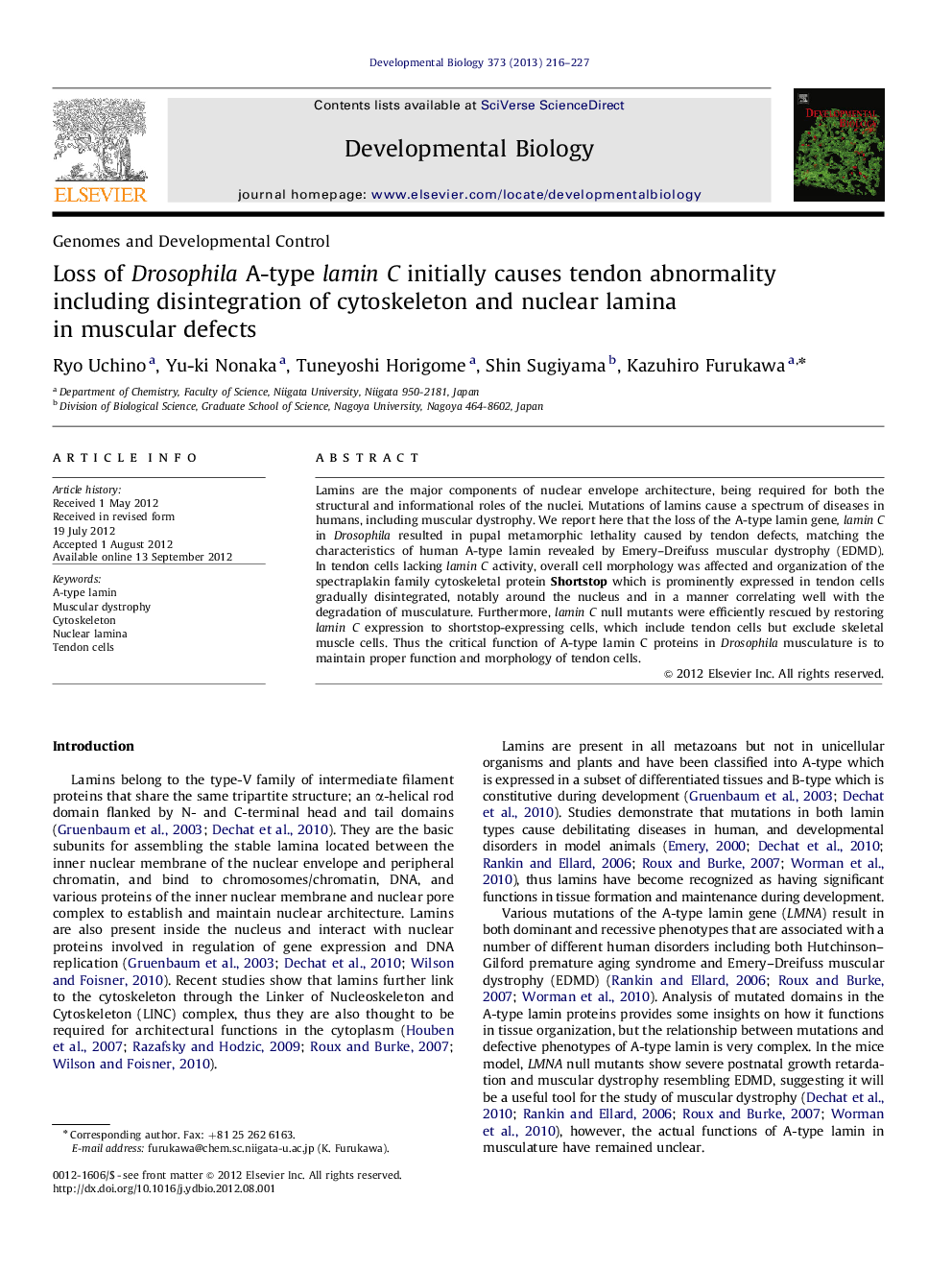| Article ID | Journal | Published Year | Pages | File Type |
|---|---|---|---|---|
| 2173149 | Developmental Biology | 2013 | 12 Pages |
Lamins are the major components of nuclear envelope architecture, being required for both the structural and informational roles of the nuclei. Mutations of lamins cause a spectrum of diseases in humans, including muscular dystrophy. We report here that the loss of the A-type lamin gene, lamin C in Drosophila resulted in pupal metamorphic lethality caused by tendon defects, matching the characteristics of human A-type lamin revealed by Emery–Dreifuss muscular dystrophy (EDMD). In tendon cells lacking lamin C activity, overall cell morphology was affected and organization of the spectraplakin family cytoskeletal protein Shortstop which is prominently expressed in tendon cells gradually disintegrated, notably around the nucleus and in a manner correlating well with the degradation of musculature. Furthermore, lamin C null mutants were efficiently rescued by restoring lamin C expression to shortstop-expressing cells, which include tendon cells but exclude skeletal muscle cells. Thus the critical function of A-type lamin C proteins in Drosophila musculature is to maintain proper function and morphology of tendon cells.
► Loss of Drosophila lamin C gene shows abnormality in musculature formation. ► The musculature abnormality results from tendon-cell defects. ► In aberrant tendon cells, organization of Shortstop gradually disintegrates in a manner correlating well with the degradation of musculature. ► A-type lamin is initially required to maintain proper function and morphology of tendon cells.
